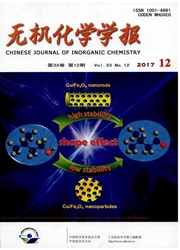

 中文摘要:
中文摘要:
采用经典Mi。理论模拟计算了Ag、Au和Cu系纳米颗粒复合薄膜的吸收光谱。所有复合薄膜的吸收光谱均在可见光范围内出现表面等离子共振(surface plasmon resonance,SPR)吸收峰。Ag、Au和Cu系复合薄膜的SPR吸收峰峰位和峰强与金属介电常数实部忙。.)和虚部忙商及介质折射率(refractive index,ns)之间存在强相关性,相比于εm1和εm2,ns的增大主导SPR吸收峰向长波方向移动且强度增强。通过改变金属和介质种类可以调节Ag、Au和Cu系复合薄膜的SPR吸收峰峰位和峰强,从而调节其光吸收特性。根据ns可以推测出金属纳米颗粒复合薄膜在可见光范围内的SPR吸收峰峰位。理论模拟吸收光谱与前人实验结果吻合.SPR吸收峰峰位的理论值与文献实验值接近。
 英文摘要:
英文摘要:
The optical absorption spectra of the nano-composite films dispersed by Ag, Au and Cu nano-particles were simulated by the classical Mie theory. It was found that the optical absorption spectra exhibit surface plasmon resonance (SPR) absorption peaks in visible region. The positions and intensities of the SPR absorption peaks are strongly affected by the real part (εm1) and imaginary part (εm2) of dielectric constant of metal and refractive index (ns) of dielectric. The SPR absorption position in visible region of the composite film is strongly dependent on ns rather than εm1 and εm2. The simulated optical absorption spectra of the composite films dispersed by Ag, Au and Cu by Mie theory in this study are in good agreement with the reported experiment results, especially showing a close SPR peak positions to each other.
 同期刊论文项目
同期刊论文项目
 同项目期刊论文
同项目期刊论文
 期刊信息
期刊信息
